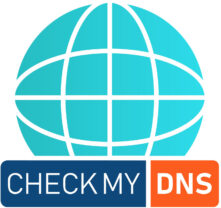DNS Technologies for Domain Management are the salient features of internet functionality. Name resolution occurs in domains as a foundation based on DNS technology. Internet-scale and complexity have been on the increase, so it needs to adapt to growing demands for growth, security, and more performance.
Emerging DNS Technologies for Domain Management and innovations in DNS technology are targeted toward the specific challenges presented by these changes, which is making DNS faster, more secure, and easier to manage. This article outlines the future of DNS and explains some of the key trends and technologies that shape the future of domain management.
1. Enhanced Security with DNS over HTTPS (DoH) and DNS over TLS (DoT)
DNS innovation focuses more on security, which is the top reason for the success of DNS over HTTPS (DoH) and DNS over TLS (DoT). Since queries over DNS mostly occur on unencrypted channels, it would be an easy means to access all that data through DNS hijacking and spoofing. DoH and DoT raise security through DNS traffic encryption in private data interchange between users and DNS servers.
- DNS over HTTPS (DoH): The DoH routes DNS requests over HTTPS, which insulates them from interception. It is very useful to mobile devices as it is for protecting DNS queries over any possibly untrusted network.
- DNS over TLS (DoT): Similar to the above, DoT, through Transport Layer Security or TLS, encrypts the DNS requests. This encryption maintains the privacy of the information and prevents eavesdropping. DoT especially applies to enterprise-level networks with secure, high performance in DNS management.
2. Implementation of DNS Security Extensions (DNSSEC) for Authentication
DNSSEC (DNS Security Extensions) is another technology focused on preventing DNS-based attacks. DNSSEC is adding cryptographic signatures to the DNS records, which allow DNS servers to verify the authenticity of responses so that users are directed to legitimate websites. DNSSEC has been around for a while, but its adoption is expected to increase as the cybersecurity threats grow and the awareness of DNS vulnerabilities increases.
3. Artificial Intelligence and Machine Learning Integration
Artificial intelligence (AI) and machine learning (ML) are changing the face of several industries, including DNS management. AI and ML are increasingly being used to automate DNS monitoring, identify anomalies, and optimize real-time routing. AI-driven systems can rapidly recognize and respond to security threats by detecting patterns and trends, minimizing downtime, and improving the user experience.
- Anomaly Detection: Algorithms in machine learning can monitor unusual DNS traffic patterns indicating possible security breaches or config mistakes.
- Smart routing: AI-based DNS can be intelligent and optimize its routing based on real-time conditions, sending users to the nearest and the fastest servers for better performance.
As AI technology keeps evolving, AI will be put to more use in managing DNS for more automation, responsiveness, and efficiency in domain management.
4. Multi-cloud DNS with redundancy, yet performance
With the increase in multi-cloud strategies, companies are embracing multi-cloud DNS configurations that enhance resilience and performance. When DNS records are hosted on multiple cloud providers, there is no chance of downtime resulting from a provider outage; thus, reliable service continuity is ensured. The performance aspect of multi-cloud DNS is based on routing DNS queries to the most efficient provider, minimizing latency for the end-users.
This follows the increasing trend for high-availability solutions in enterprise environments. As organizations prioritize uptime and resilience, multi-cloud DNS solutions will gain increased popularity, especially for organizations with larger international client bases.
5. Edge Computing and DNS
Edge computing is becoming very relevant for DNS. This makes sure the data is processed closer to where it was generated, so distance is reduced and, consequently, latency and load times. This enables fast responses, particularly in remote or underserved regions where access to central DNS infrastructure might be limited.
Providers already invest in edge infrastructure. As more content is delivered and the number of IoT services increases, they are going to invest increasingly more in that. What edge computing integrates with is DNS. Through this means, providers can make DNS resolve much faster and better, helping in providing a rich user experience, and meeting requirements for living in an increasingly highly connected world.
6. Simplification of DNS Management via API-driven DNS services
Recently, DNS providers have introduced API-driven DNS management solutions that simplify the configuration and automation of domains. With API-based DNS management, developers and businesses can integrate DNS configuration into their systems and automate updates of records, traffic management, and monitoring.
API-driven DNS simplifies the management of domains, which helps organizations scale DNS infrastructure to meet real-time needs without human intervention. This trend is useful for DevOps and IT teams because it can provide more agility and control over DNS configurations
DNS Technologies for Domain Management seems to be strongly based on improvements in the areas of security, automation, and performance optimization. The most noteworthy ways of ensuring more secure and resilient DNS infrastructures are DoH, DoT, DNSSEC, and AI-based DNS management.
The changing internet means that DNS providers have been evolving to respond to an increasingly fast online environment with solutions that enable faster, safer, and more efficient domain management. This keeps businesses up-to-date on the latest trends and applies emerging DNS technologies for improved website performance, enhanced cyber threat protection, and superior user experiences.
